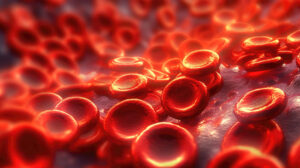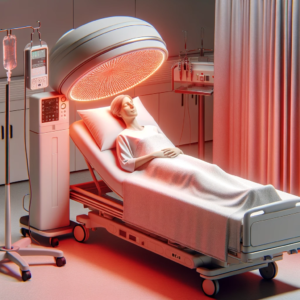
How Does Infrared Therapy Impact Cellular Health And Pain Relief?
Have you ever wondered how infrared therapy can improve your cellular health and provide relief from pain? Infrared light therapy has gained significant attention in recent years for its potential benefits in promoting overall well-being. By delivering targeted infrared light waves into the body, this therapy stimulates mitochondria in the cells, boosting energy production and enhancing cellular regeneration. This article explores the fascinating relationship between infrared therapy, cellular health, and pain relief, shedding light on the science behind its effectiveness and the potential it holds for various conditions. Whether you’re curious about improving your overall health or seeking natural pain management solutions, this article will provide you with valuable insights into the power of infrared therapy.
What is Infrared Therapy?
Infrared therapy, also known as infrared light therapy or infrared sauna therapy, is a form of treatment that utilizes infrared radiation to provide various health benefits. This therapy involves exposing the body to light in the infrared spectrum, which is invisible to the human eye but can penetrate deep into the tissues. It is a non-invasive and non-chemical approach that is growing in popularity due to its potential to enhance cellular health, relieve pain, and improve skin conditions.
Definition
Infrared therapy is a therapeutic technique that uses infrared radiation to provide various health benefits. Infrared radiation is a type of electromagnetic radiation that falls between visible light and microwave radiation on the electromagnetic spectrum. It has a longer wavelength than visible light, allowing it to penetrate deep into the body’s tissues. By exposing the body to infrared radiation, this therapy stimulates cellular activity and promotes healing and well-being.
Types of Infrared Therapy
There are several types of infrared therapy, each with its own unique application and benefits. Some of the most common forms include:
- Infrared saunas: Infrared saunas are small, enclosed spaces that emit infrared radiation to heat the body directly. This type of therapy is often used for relaxation, detoxification, and pain relief.
- Infrared light therapy devices: These devices, also known as infrared lamps or panels, emit infrared radiation that can be targeted to a specific area of the body. They are commonly used to provide pain relief and stimulate healing.
- Infrared heating pads: These portable pads generate infrared radiation and can be applied to various parts of the body to relieve pain and promote blood circulation.
- Infrared wraps and blankets: These wearable devices produce infrared radiation and are often used for pain relief, muscle relaxation, and body detoxification.
With the advancements in technology, various infrared therapy devices are now available for home use, making it a convenient option for individuals seeking its benefits.
Mechanism of Infrared Therapy
To understand how infrared therapy works, it is important to explore its underlying mechanisms. There are three key mechanisms that contribute to the therapeutic effects of infrared therapy: the absorption of infrared radiation by cells, the activation of mitochondria, and the increased blood circulation.
Absorption of Infrared Radiation by Cells
When exposed to infrared radiation, the body’s cells absorb this energy. This absorption triggers a series of biological responses, including the activation of specific proteins and signaling pathways. The absorbed infrared radiation stimulates cellular activity, leading to various therapeutic effects.
Activation of Mitochondria
Mitochondria are the powerhouse of the cells, responsible for generating energy in the form of adenosine triphosphate (ATP). Infrared therapy promotes the activation of mitochondria, enhancing their ability to produce ATP. This increased energy production is crucial for cellular repair, regeneration, and overall cellular health.
Increased Blood Circulation
Another important mechanism of infrared therapy is its ability to increase blood circulation. When infrared radiation is applied to the body, it penetrates deep into the tissues, warming them. This warmth causes the blood vessels to dilate, improving blood flow to the treated area. Increased blood circulation brings more oxygen and nutrients to the cells and removes waste products, aiding in the healing process and promoting overall health.

How Does Infrared Therapy Impact Cellular Health And Pain Relief?
Effects of Infrared Therapy on Cellular Health
Infrared therapy has a profound impact on cellular health, benefiting various physiological processes within the body. Here are some of the effects of infrared therapy on cellular health:
Enhanced Energy Production in Cells
One of the key effects of infrared therapy is its ability to enhance energy production in cells. By stimulating the mitochondria, infrared therapy increases ATP production, providing cells with the necessary energy to carry out their functions effectively. This enhanced energy production is vital for cellular repair, regeneration, and overall cellular health.
Improved Cellular Metabolism
Infrared therapy has been shown to improve cellular metabolism, which refers to the chemical processes that occur within cells to maintain life. By promoting the efficiency of cellular metabolism, infrared therapy helps cells function optimally, leading to improved overall health and well-being.
Reduced Oxidative Stress
Oxidative stress is a state of imbalance between the production of reactive oxygen species (ROS) and the body’s ability to neutralize them with antioxidants. Excessive oxidative stress can damage cells and contribute to the development of various diseases. Infrared therapy has been found to reduce oxidative stress by increasing the production of antioxidants and reducing the formation of ROS. This antioxidant effect helps protect cells from damage and supports their overall health.
Role of Infrared Therapy in Pain Relief
Infrared therapy has gained significant attention for its potential in relieving pain and promoting healing. Here are some of the ways infrared therapy helps alleviate pain:
Increased Blood Flow and Nutrient Supply
When infrared radiation is applied to the body, it penetrates deep into the tissues, causing blood vessels to dilate. This dilation leads to increased blood flow to the treated area, delivering more oxygen, nutrients, and immune cells. Improved blood flow helps accelerate the healing process, reduces inflammation, and provides relief from pain.
Muscle Relaxation and Tissue Repair
Infrared therapy has a relaxing effect on muscles, helping to relieve muscle tension and spasms. By promoting muscle relaxation, it reduces pain caused by muscle tightness and stiffness. Additionally, infrared therapy promotes tissue repair by stimulating collagen production and enhancing cellular activity, leading to faster healing of injuries and wounds.
Modulation of Inflammatory Response
Infrared therapy has been found to modulate the body’s inflammatory response, playing a role in reducing pain associated with inflammation. It helps regulate the production of inflammatory mediators and promotes the release of anti-inflammatory molecules. By modulating the inflammatory response, infrared therapy helps reduce pain and swelling, improving overall comfort and well-being.

Infrared Therapy for Skin Health
Beyond its pain-relieving properties, infrared therapy offers numerous benefits for skin health. Here’s how infrared therapy can improve the condition of the skin:
Stimulation of Collagen Production
Collagen is a protein that provides structural support to the skin, keeping it young, firm, and resilient. Infrared therapy has been shown to stimulate collagen production in the skin, helping to improve its elasticity, smoothness, and overall appearance. Increased collagen production can reduce the appearance of wrinkles and fine lines, giving the skin a more youthful and radiant look.
Reduced Wrinkles and Fine Lines
Infrared therapy can help diminish the appearance of wrinkles and fine lines by promoting collagen synthesis and enhancing cellular activity in the skin. Regular infrared therapy sessions can improve skin texture and tone, resulting in a more youthful and rejuvenated appearance.
Promotion of Wound Healing
Infrared therapy has been found to promote wound healing by increasing blood flow, stimulating cellular activity, and enhancing collagen production. These effects help accelerate the repair and regeneration of damaged skin, making infrared therapy a valuable tool in wound management.
Application of Infrared Therapy
Infrared therapy finds applications in various fields, including medical and clinical settings, sports and fitness, and cosmetic and beauty treatments.
Medical and Clinical Applications
Infrared therapy is utilized in medical and clinical settings for the treatment of various conditions, such as chronic pain, arthritis, muscle strains, and joint stiffness. It is often used as an adjunct therapy alongside other treatments to enhance their effectiveness and promote faster healing.
Sports and Fitness Applications
Infrared therapy is increasingly being incorporated into sports and fitness routines. Athletes use infrared therapy to promote muscle recovery, relieve muscle soreness, and prevent injuries. It also helps improve performance by increasing blood flow and enhancing cellular metabolism.
Cosmetic and Beauty Applications
Infrared therapy has gained popularity in the cosmetic and beauty industry. It is used in facials and skincare treatments to improve skin texture, promote collagen synthesis, and reduce the appearance of wrinkles and fine lines. Infrared therapy is also utilized in body contouring treatments to help slim and tone various areas of the body.

Safety and Precautions of Infrared Therapy
While infrared therapy is generally considered safe, it is essential to take certain precautions to ensure its effective and safe use.
Proper Distance and Exposure Time
Maintaining the appropriate distance and exposure time is crucial to avoid burns or excessive heating of the body. It is important to follow the manufacturer’s instructions for the specific infrared therapy device being used and to consult with a healthcare professional if unsure.
Monitoring Body Temperature
During an infrared therapy session, it is important to monitor your body temperature regularly. If you start to feel lightheaded, dizzy, or excessively hot, it is essential to stop the therapy immediately and cool down.
Avoiding Eye Exposure
Direct exposure of the eyes to infrared radiation can cause damage. Therefore, it is important to protect the eyes with appropriate eyewear or by keeping them closed during an infrared therapy session.
Research and Evidence
Scientific studies and clinical trials have investigated the efficacy and benefits of infrared therapy. While more research is needed, the existing evidence suggests promising results.
Scientific Studies on Infrared Therapy
Numerous scientific studies have explored the effects of infrared therapy on various health conditions. Research has demonstrated the positive impacts of infrared therapy on pain relief, wound healing, tissue repair, and skin health.
Clinical Trials and Patient Experiences
Clinical trials have been conducted to evaluate the effectiveness and safety of infrared therapy for specific conditions. These trials often involve a control group and measure various outcomes such as pain intensity, range of motion, and quality of life. Additionally, anecdotal evidence and patient experiences report significant improvements in pain relief, skin appearance, and overall well-being with the use of infrared therapy.

Comparison with Other Therapies
Infrared therapy offers unique advantages over other therapeutic modalities. Here are some comparisons between infrared therapy and other commonly used therapies:
Infrared Therapy vs. Laser Therapy
Both infrared therapy and laser therapy utilize light energy for therapeutic purposes. However, laser therapy typically uses a narrower wavelength range and focuses the light on a specific area, whereas infrared therapy applies a broader spectrum of light to a larger area of the body. Laser therapy is often used for more specific clinical applications, while infrared therapy provides a more generalized approach and is widely accessible.
Infrared Therapy vs. Hot/Cold Therapies
Hot and cold therapies, such as heat packs and ice packs, are commonly used for pain relief and muscle relaxation. While these therapies provide temporary relief, infrared therapy offers deeper penetration and longer-lasting effects. The infrared radiation can reach deep tissues, promoting circulation and cellular repair, making it a comprehensive and effective treatment option.
Conclusion
Infrared therapy is a versatile and effective therapeutic technique that harnesses the power of infrared radiation to promote cellular health, relieve pain, and improve skin conditions. Its ability to stimulate cellular activity, enhance energy production, and increase blood circulation makes it a valuable tool in various fields, including medicine, sports, and beauty. While more research is needed to fully understand its mechanisms and therapeutic potential, the existing evidence supports its efficacy and safety. Whether you are seeking pain relief, improved cellular health, or enhanced skin appearance, infrared therapy may hold the key to your well-being.









